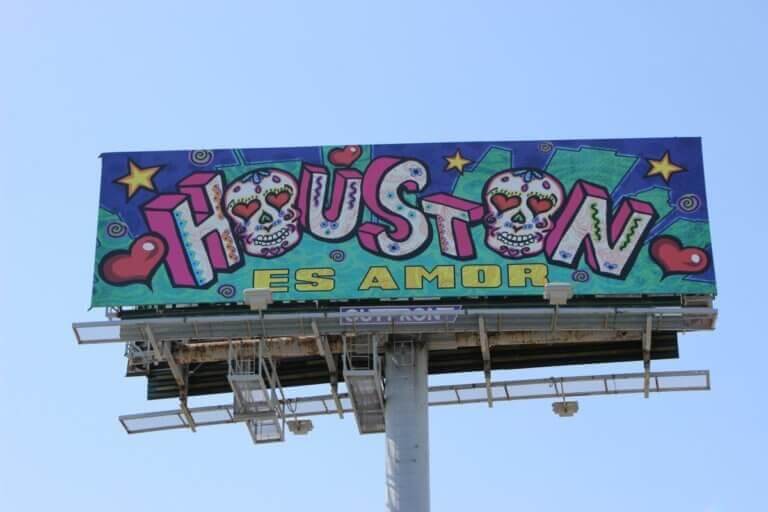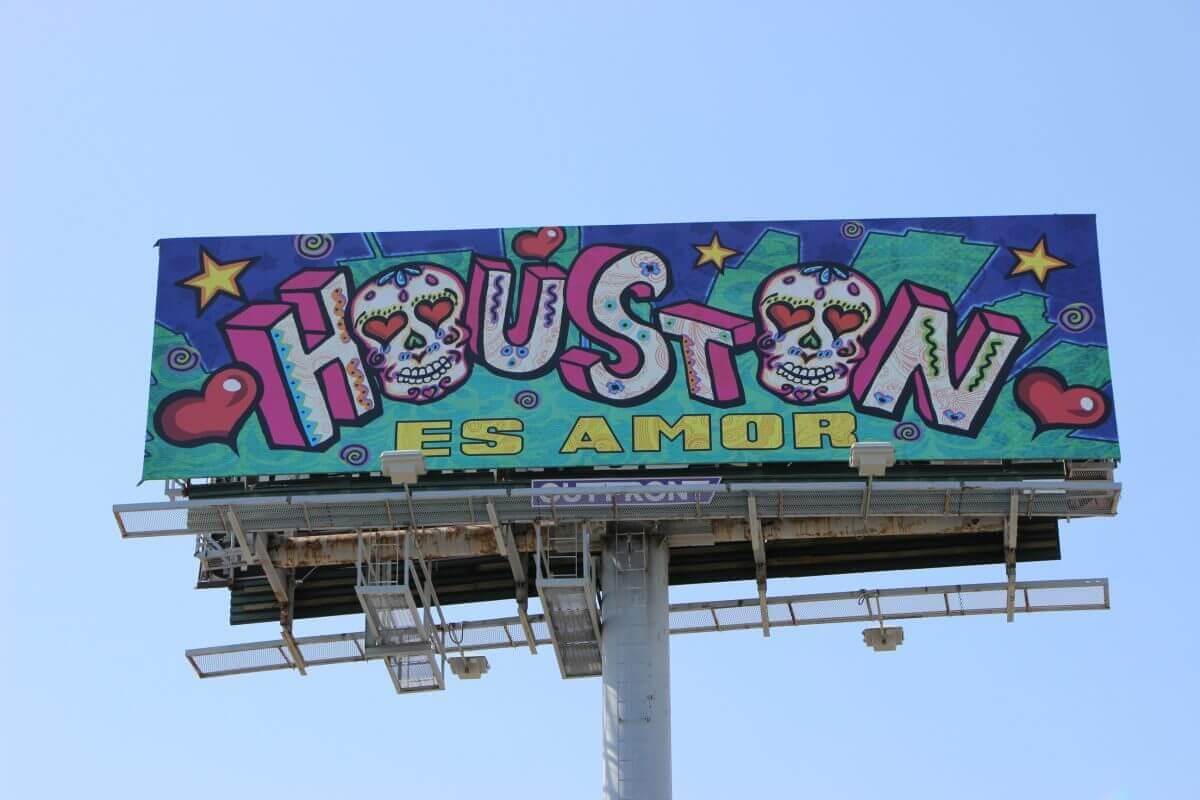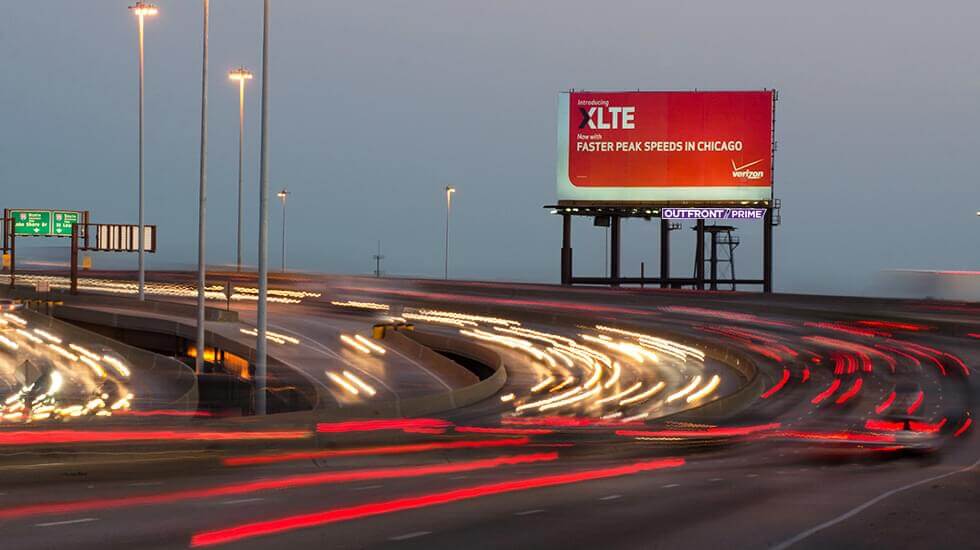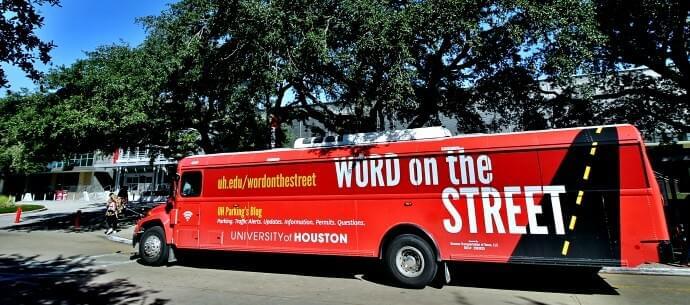
Houston, we don’t have a problem when it comes to impactful billboard messages. Houston is upfront with incorporating out-of-home (OOH) advertising in their busy environments. To brush up, OOH media advertising is focused on marketing to consumers when they are “on the go” in public places, in transit, waiting around, and in commercial locations. OOH advertising is easy to promote into a populous city of any country, because of its mass appeal and ability to connect with crowds. A city that does OOH advertising justice is Houston, Texas. Being the 4th largest city in the U.S., and the energy capital of the world, also ranked #1 in manufacturing, Houston is forward-thinking in the evolution of science and business. Let’s examine the benefits of billboard advertising in Houston, and the costs that follow, as well as the best locations to advertise and the Highway Beautification Act.
Overview of Houston
Houston is the most populous city in the state of Texas, with a population of approx. 2.313 million in 2017. Billboard, bus, or taxi advertising is common in Houston, exhibiting the unique services that the south has to offer. Their Museum district is visited by over 7 million art fanatics a year, which seems to be a heavy traffic area to display OOH advertising- potentially, severely targeted to artists and creative thinkers.
Advertising near the Galleria or River Oaks creates brand awareness among shoppers and reaches 42,000+ students at the University of Houston. Shopping plazas such as Jester Village Shopping Center and Northtown Plaza Shopping Center see local advertising beneficial to their consumers. Billboards leading to Minute Maid Park, home of the Houston Astros, become targeted to sports fans and enthusiasts.
The billboards, digital units, and other Houston outdoor advertising options are primarily done by OUTFRONT Media, which impacts 95% of the total population, including Downtown, The Medical Center, The Galleria, and the highly visited Galveston Island.
Other advertising companies that flourish in Houston include TopSpot Internet Marketing, Adcetera, Lopez Negrate Communications Inc., BubbleUp, and The Carson Group. Whether it be online marketing or outdoor advertising, Houston has plenty of companies that cover a ton of outreach fields.
In Houston, billboards can be found along the I-610 highway that circles downtown, or the I-10 and I-69 which go directly through it. Houston has two large airports, IAH and HOU, as well as a transit system of light rail and buses that provide great advertising opportunities.
Cost of Billboards in Houston
A few companies that offer competitively priced billboards are Clear Channel Outdoor, OUTFRONT Media, and Blue Line Media. These companies have offices in Houston and a distribution of other advertising channels, making them top OOH providers for the growing city.
We need to stress the location, audience impressions, and demographics when thinking about billboard advertising. Placing a billboard in the Museum district may cost just as much as positioning a billboard on the I-610 highway because of the high number of audience impressions passing through them. However, if a Houston billboard is found in Hedwig Village, a suburb, then the overall cost will be a lot less because more rural targets will be missing out on the viewing experience.
Out of home advertising prices vary on these factors:
- Traffic volumes
- The number of people in each car
- The position of the billboard on the road
The cost of renting a billboard will depend greatly on the size of the billboard that you are looking to rent. Here’s the breakdown of average price by size for the billboard in the Minneapolis metro area, according to a source from BillboardsIn:
- Digital Billboards: $2,500-$8,000 per month
- Large Billboards (also called Bulletins): $1,500-$5,000 per month
- Medium Billboards (also called Posters): $700-$3,000 per month
- Small Billboards (also called Junior Posters): $300-$800 per month
The range of the price for each size is the determined cost including circulation, demographics, and impressions.
The Highway Beautification Act
Houston… we may have a problem. Since 1980, the amount of billboards in Houston dropped from 15,000 to under 1,500. This was due to The Highway Beautification Act that sought to control and limit the number of billboards in Texas in order to clean up the views and protect the natural landscape. Scenic activists and billboard advertisers have been at a disagreement over whether or not Houston should implicate billboards, especially on highways and freeways. However, because OOH advertising is more than a $10 billion industry, there have been loopholes found to keep billboards growing and reappearing in Houston.
In 2017, a proposed rule change by the Texas Department of Transportation has allowed billboard heights to double, meaning that billboards could be as high as 85 feet, a huge leap from 42.5 feet (which was the solution from the Texas Senate). 159 billboards above the height limit in Houston became exempt from the Highway Beautification Act ruling, which works to remove signage along highways and state roads. The loophole was that the Highway Beautification Act doesn’t govern sign height, so there was a convenient way to maintain the effect of a raised billboard. As of March 1, 2017, the Texas Senate Bill reworded the definition of a “commercial sign” to meet with the new ruling which legalized the height of all billboards to soar up to 85 feet.
Jason King, a representative of Clear Channel Outdoor, said that, “We are pleased to be a part of the public rule-making process and look forward to a resolution… This form of media has proven it’s cost-efficient platform for a business to reach consumers in a contextual way, and, provides economic stimulus to the local economies in which we operate.” (Fanelli 2017).
Though Houston operates under stricter billboard control, the city continues to advertise using OOH methods.
Transit Advertising
In Houston, the method of transit is called The Metropolitan Transit Authority of Harris County (or METRO) and it runs through downtown and uptown Houston, as well as a number of other areas where commuters frequent. There are 44 light rail stations and 12 rapid bus transit stops. There are 83 local bus routes, however the municipality of Houston limits advertising on the sides of buses because it’s seen as unsightly. The majority of the advertising in Houston, for transit, is done by OUTFRONT Media and it’s usually placed in bus shelters and subways. The youthful and energetic rail/subway audience is a prime demographic for urban Houston advertisements. There is also a large focus on Transit Liveboard Networks, which include advertising with impactful full motion videos in subway stations.
Of all outdoor advertising channels, billboards continue to prevail. Especially in Houston, where even roadblocks such as the Highway Beautification Act didn’t stop the city from advertising on populous routes. After looking at the best places to advertise in Houston, the average costs of billboards, the billboard restrictions, and the way the METRO incorporates OOH advertising, it’s important to remember Houston is a city that has faced hindrances in billboard development, but continues to surpass them.
References:
Fanelli, Joseph (29 September 2017). Texas Billboards Could Skyrocket in Height Because of Loophole. HoustonPress. Retrieved from: https://www.houstonpress.com/news/texas-billboards-could-double-in-size-because-of-new-txdot-rule-9832244






